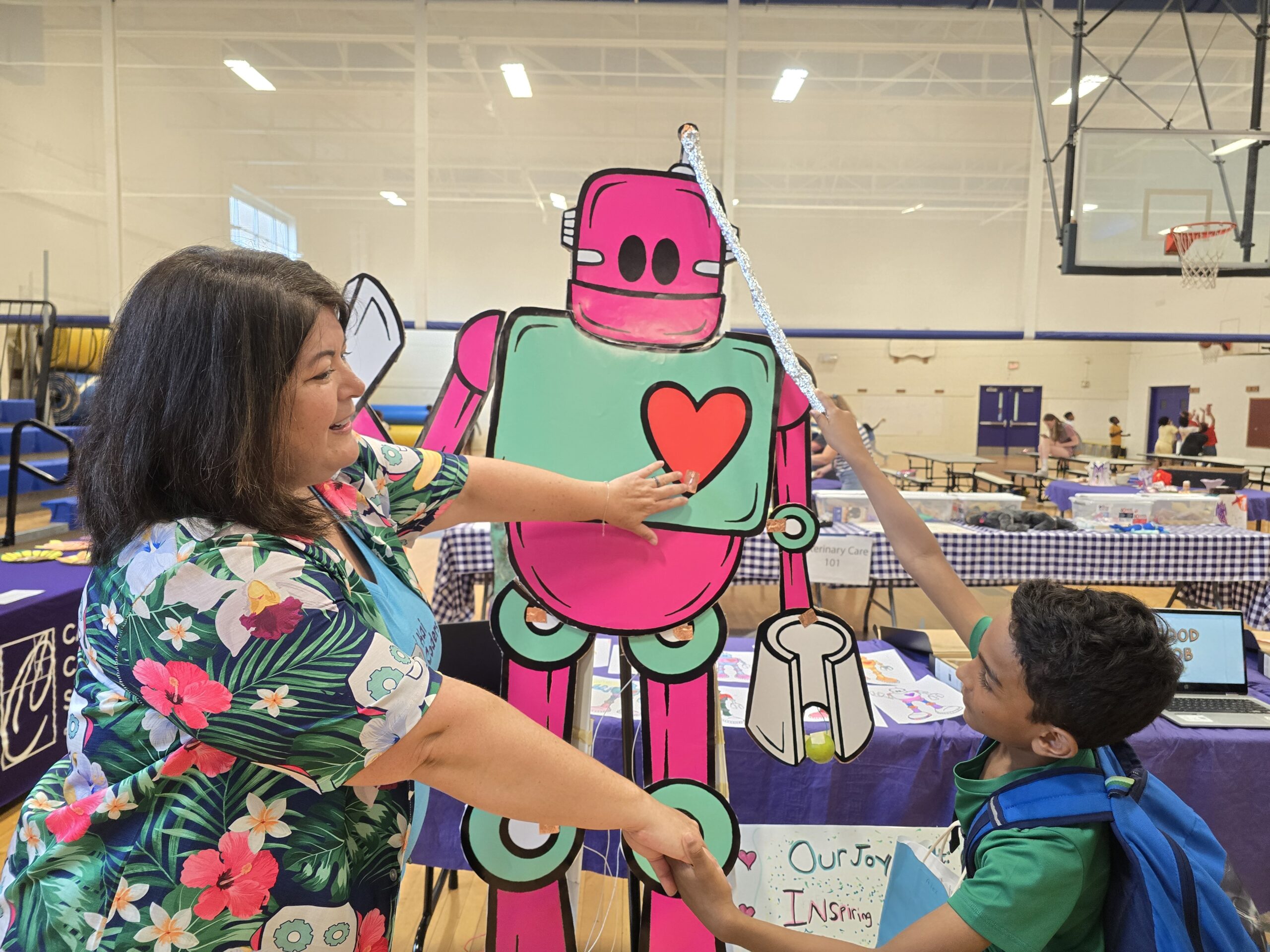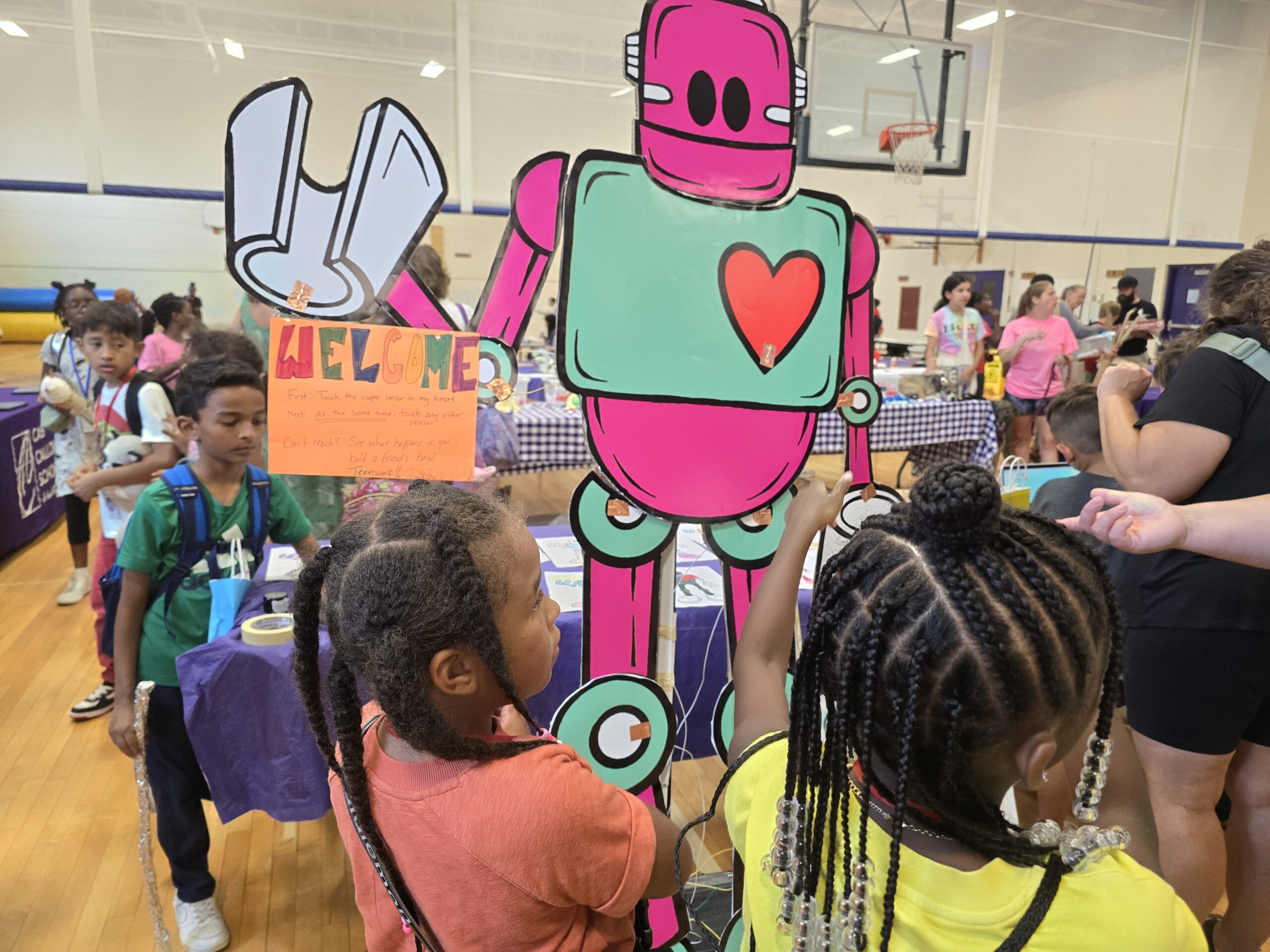Those viral Chez Robots are everywhere this summer — including summer camp.
Eleven kids aged 7 to 10 attended summer camp last week, keeping cool and giving a voice to their very own “viral robot,” thanks to a collaboration with Wilmington artist Chez, whose colorful outdoor robots can be spotted all over Wilmington, and are even starting to appear outside of the First State (check out this new one in Denver).
“Computer Guts and Robot Brains,” led by Deanna Bledsoe, founder of Kai Coders and a 2022 RealLIST Engineer, was held at Cab Calloway School in Wilmington as part of its six-week SmArt Summer camp program. The weeklong creative education programming focuses on everything from music to theater to STEM and supports area kids regardless of their ability to pay. This year alone, it gave out $70,000 worth of scholarships for students who would otherwise not be able to attend summer camp.
Bledsoe first noticed a Chez robot on Union Street last spring. Soon after, she read about the public art project by Chez, whose full name is David Sanchez, and reached out to him on social media. The artist and owner of Spaceboy in Wilmington created a PDF of a black-and-white line drawing of a robot for her to use in various projects.
The first Chez robot project was part of a Code Mosaic class, another program Bledsoe founded along with Lazarus Education Services founder Rosie Tooley. Students programmed small prototypes with moving joints.
Robot brains: Kids code to make the robots talk
For the SmArtSummer camp program, Bledoe decided to go bigger. She blew up the robot parts, colored them pink and green, and put together a life-sized, cardboard-backed Chez robot for a project to incorporate coding and circuitry.
She originally planned to have the kids program the robot to play music, but the students had other plans. They wanted to make the robot talk in their voices, delivering inspirational messages like: “If life gives you lemons, paint them orange and sell them for twice the price!”
Each student recorded, coded and wired their message. To play the messages, you close the circuit loop by touching a metal pad on its heart and then touching another pad on its joints or the top of its head.
“7 to 10-year-olds can do stuff like this,” Bledsoe told Trechnical.ly at the camp’s end-of-session showcase. “Stripping wires, learning how to use wire, practical stuff.”
Eight-year-old Alex, a rising 3rd grader, showed me how they used Scratch, a visual programming language aimed primarily at kids, to code, and connected the wires to the robot so it would speak.
Alex’s favorite part of the camp, he said, was coding. It was his first time learning to code, and he’s already made his own game in Scratch where a player moves an apple-eating cat on the screen.
Modifying the project for accessibility
“We talked about accessibility,” said Bledsoe.” That’s one of the key things.” said Bledsoe.
The students soon observed that the robot wasn’t accessible to everyone, and wanted to find a way to change that.
The kids realized that if someone was short, they might be able to use a ladder to connect with the high sensors, but someone in a wheelchair wouldn’t be able to use a ladder. The solution they came up with was to make an aluminum foil “stick” that extends the user’s reach, allowing anyone to hear all of the messages.

Computer guts: Dissecting donated tech for other projects
For another project, students disassembled old donated computers and learned what each part does.
Using the same circuit method used with the robot, they connected parts to a speaker. When you touch one end of the circuit while touching a part, a recorded voice tells you what it does:
Next up for Blesdoe is “Around the World with Code,” another SMArtSummer camp, this time for rising first and second graders.
With the “Computer Guts and Robot Brains” summer camp session and showcase now over, the robot is going to be put away for now, but this isn’t its last hurrah.
“The robot,” Bledsoe said, “will definitely come out again.”







